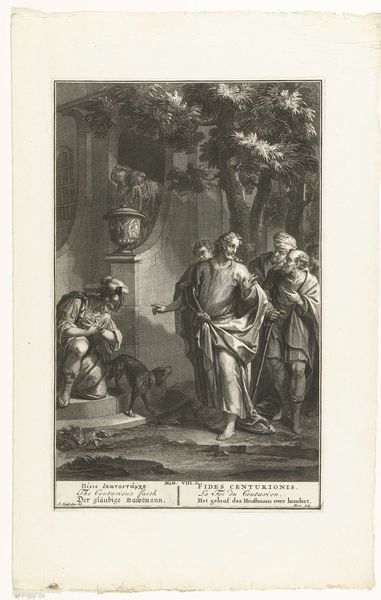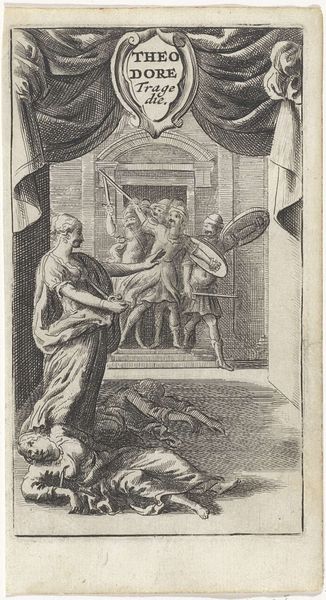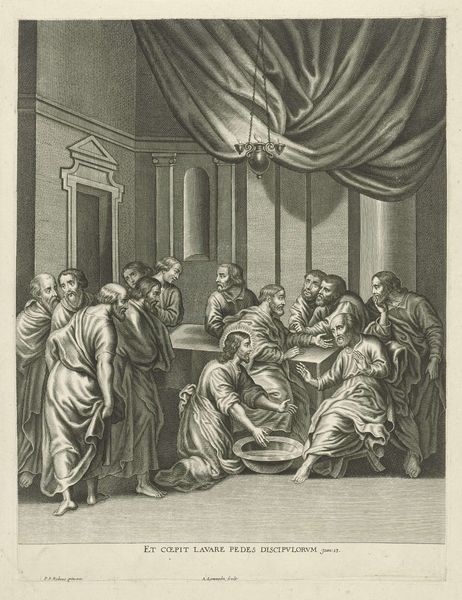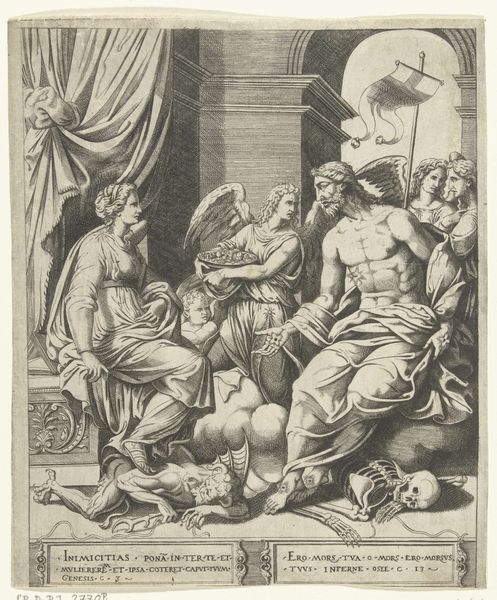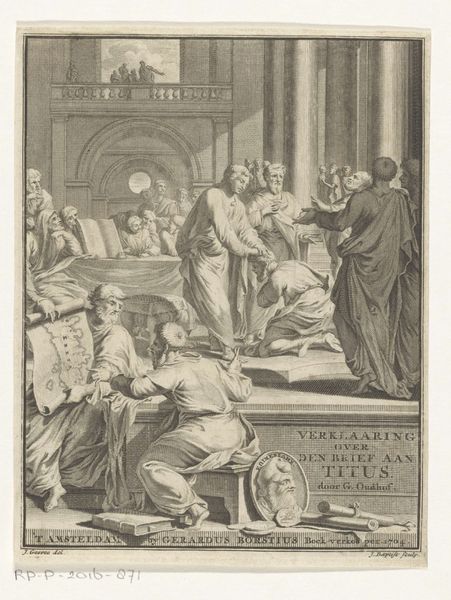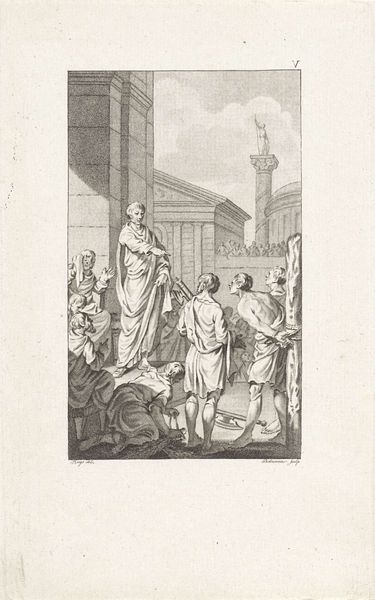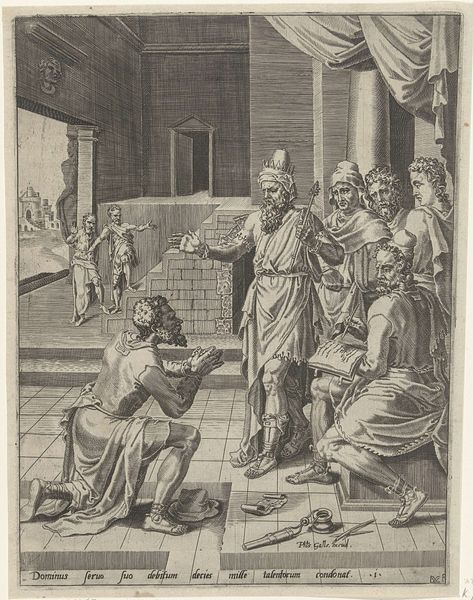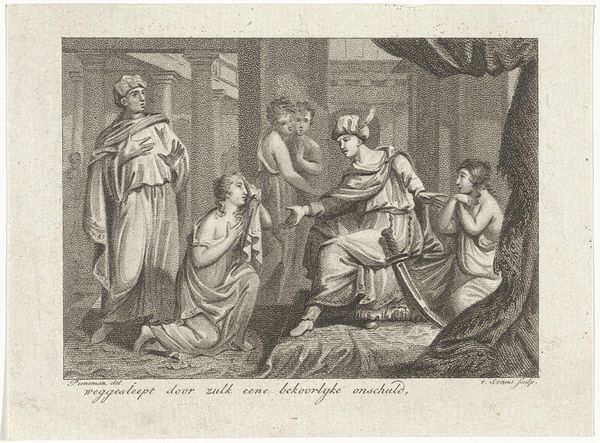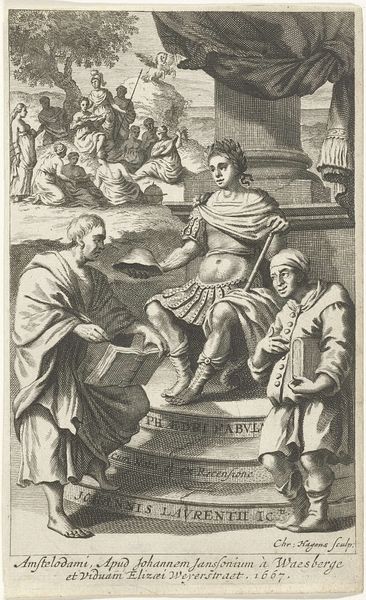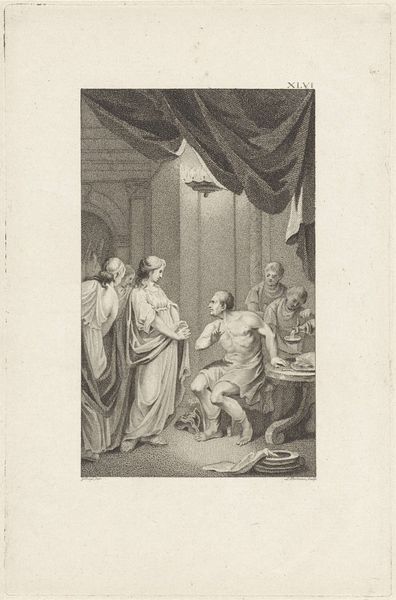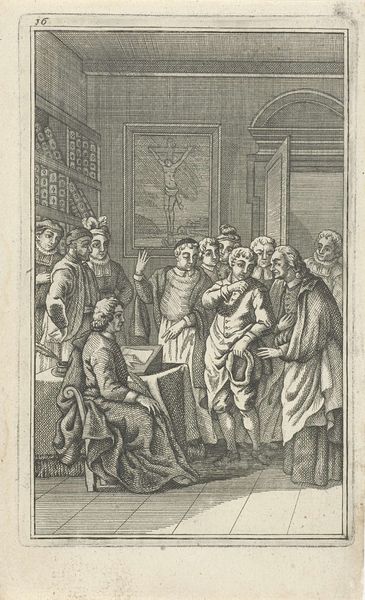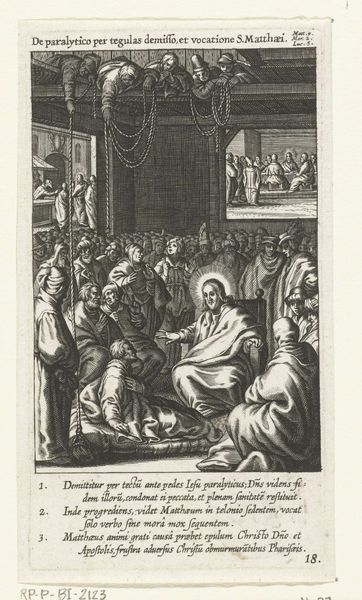
drawing, print, etching, engraving
#
portrait
#
drawing
#
neoclacissism
# print
#
etching
#
old engraving style
#
archive photography
#
historical photography
#
19th century
#
history-painting
#
engraving
Dimensions: height 115 mm, width 75 mm
Copyright: Rijks Museum: Open Domain
Lambertus Antonius Claessens created this print, ‘Emperor Hadrian in the Bathhouse’, in 1803 using the technique of etching, a process which allows for the creation of fine, detailed lines. This print shows the Roman Emperor Hadrian in the bathhouse surrounded by his attendants. Look closely at the textures – the smooth skin of the bathers, the rough cloth, and the hard stone of the bath. The artist skillfully used the etching technique to create these effects, and convey a sense of depth and space. The process begins with a metal plate covered in a waxy, acid-resistant ground, and then lines are drawn into the ground with a sharp needle, exposing the metal. The plate is then submerged in acid, which bites into the exposed lines, creating grooves. The deeper the bite, the darker the line will appear on the print. The plate is then inked, and the surface wiped clean, leaving ink only in the etched lines, before being pressed onto paper. Prints like these were affordable and reproducible, allowing stories and images to circulate widely during this period, and this print provides a fascinating window into the social dynamics of labor, class, and the artistic techniques used to depict them.
Comments
No comments
Be the first to comment and join the conversation on the ultimate creative platform.
